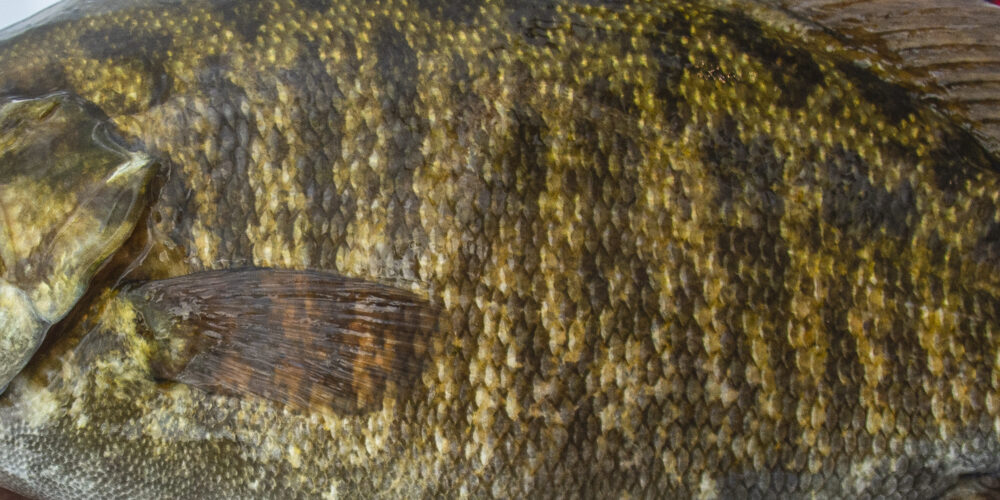Bass Pro Tour Anglers Will Participate in Smallmouth Study at St. Clair

At the upcoming Stage Seven of the Bass Pro Tour on Michigan’s Lake St. Clair, anglers competing on Day 1 and Day 2 will once again have the option to use their livewells.
The last time you saw a livewell option on the Bass Pro Tour was at Lake Fork in 2020, where anglers had the opportunity to preserve ShareLunker largemouth – fish 13 pounds or larger – in their livewells to hand off to the Texas Parks and Wildlife Division for spawning purposes. This time around, it will be to help advance research into Largemouth Bass Virus (Ranavirus) and its clinical signs in smallmouth bass (Micropterus dolomieu).
The anglers are assisting Dr. Thomas Loch’s research team at Michigan State University’s Aquatic Animal Health Laboratory and Tom Wills at Michigan DNR, both of whom are currently researching if external skin lesions on smallmouth bass are linked to Largemouth Bass Virus (LMBV).
The Science of LMBV
Much of what we know about LMBV comes from the southern U.S., where the virus can result in the mortality of largemouth (Micropterus salmoides). It was first isolated from fish in Lake Weir in 1991 and has been considered the cause of dozens of fish kills in the late 90s and early 2000s. In largemouth, the virus causes lethargy, bleeding, enlarged organs, swim bladder lesions and death in adult-sized fish.
Recent research has shown the virus infecting smallmouth in the Chesapeake Bay watershed and several rivers in Pennsylvania. Dr. Loch’s lab has also been able to infect smallmouth with LMBV in the lab, demonstrating that external skin lesions appear on these infected fish. Dr. Loch’s team is drawing closer to finding a correlation between LMBV, external skin lesions, temperature and smallmouth bass kills that have occurred in the Susquehanna, Juniata, and Alleghany Rivers since 2005.
Collecting smallmouth that have skin lesions in St. Clair is part of the ongoing look into the prevalence and clinical signs of LMBV in the Great Lakes system.
Our anglers will report to the MLF Fisheries Management Division (FMD) during practice the number of smallmouth they catch that exhibit a skin lesion. Once competition starts, FMD will continue to tally the occurrences of skin lesions as part of the data we collect from every fish caught during the event. On Days 1 and 2, anglers will also be allowed to place any fish with a skin lesion into their livewells for donation to Dr. Loch’s lab for further analysis.
These fish will be transported back to the Michigan State Aquatic Animal Health Laboratory for observation, skin lesion biopsy, and virus isolation. We will also provide catch data – including GPS location – for each donated fish to calculate any correlations between location and LMBV prevalence.
Because these anglers may consequently have carried LMBV-positive fish in their livewells, FMD will implement a cleaning procedure for any angler that donates a fish. This will include using a disinfectant in the livewell and recirculation pumps for 15 minutes, then flushing the system and drying the livewells out on their off day.
The Fisheries Management Division – as well as our roster of Bass Pro Tour anglers – is excited to be part of this research project as well as helping to further this research in coming seasons.
Watch for regular updates on similar projects on the MLF Fisheries Management Division page here at MajorLeagueFishing.com